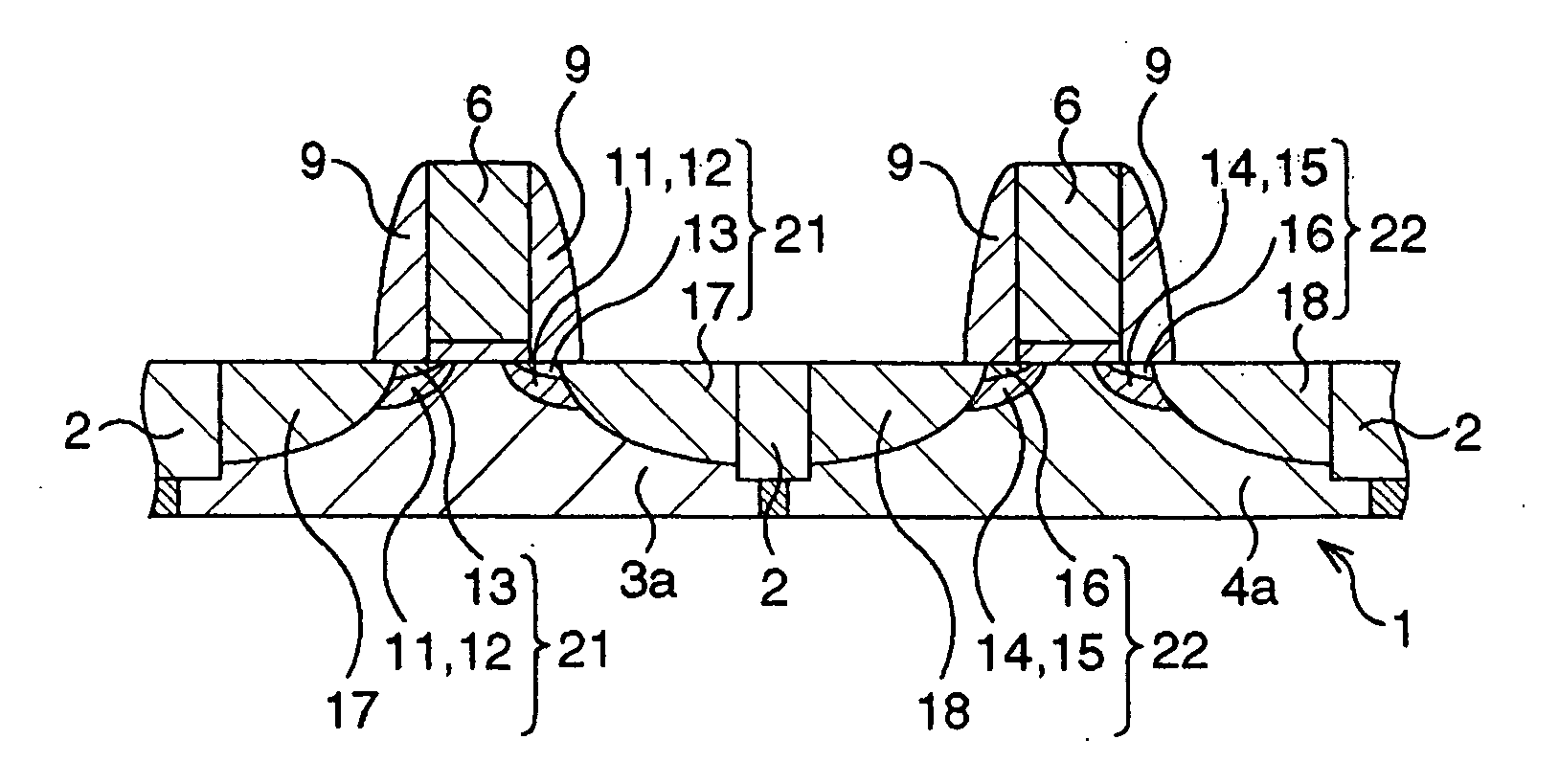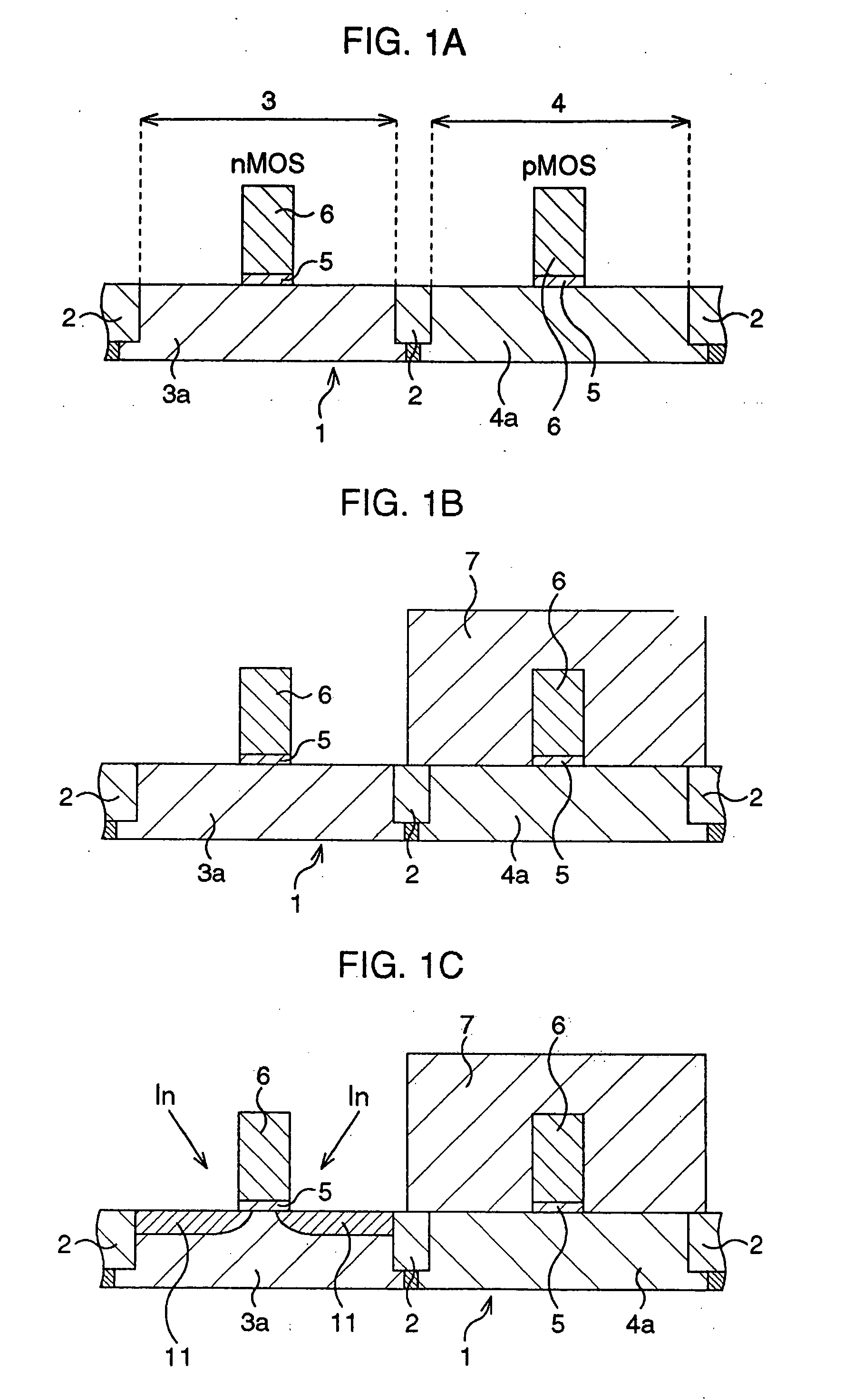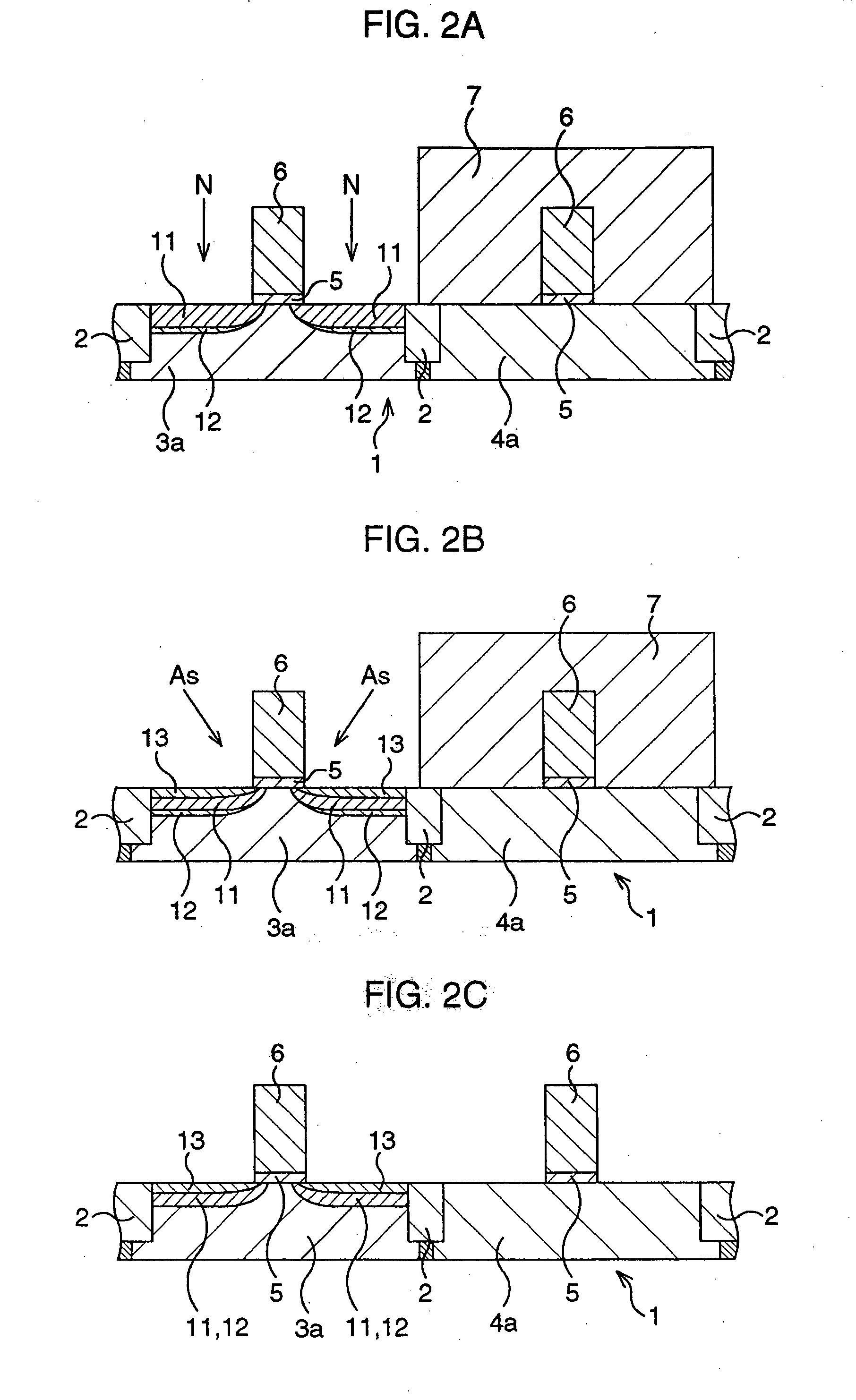Method of fabricating semiconductor a device
a semiconductor and manufacturing method technology, applied in the field of semiconductor devices, can solve the problems of time-dependent changes in threshold voltage, shorten gate length, increase non-conformities, etc., and achieve the effect of simple and exact, improved threshold voltage and current drivability, and high device integration
- Summary
- Abstract
- Description
- Claims
- Application Information
AI Technical Summary
Benefits of technology
Problems solved by technology
Method used
Image
Examples
specific embodiments
[0048] Based on the basic concept of the present invention described in the above, specific embodiments will be explained. The following paragraphs exemplify a CMOS transistor as a semiconductor device, and therefore deal with constitutions thereof together with methods of fabricating thereof. It is to be noted that the present invention is by no means limited to CMOS transistor, but is applicable to any semiconductor devices based on transistor structure having a gate, source and drain.
first embodiment
[0049]FIGS. 1A through 4C are schematic sectional views serially showing process steps of a method of fabricating a CMOS transistor according to the first embodiment.
[0050] First as shown in FIG. 1A, element active regions and gate electrodes are formed according to general CMOS processes.
[0051] More specifically, according to STI (shallow trench isolation) process, trenches are formed by photolithography and dry etching in a semiconductor substrate 1 in the areas planned for forming element isolation region, a silicon oxide film is deposited typically by CVD process so as to fill the trenches, and the silicon oxide film is removed by CMP (chemical mechanical polishing) from the top so as to allow it to remain only in the trenches, to thereby form STI-type element isolation structure 2 and partition an n-type element active region 3 and a p-type element active region 4. Next, a p-type impurity and an n-type impurity are introduced by ion implantation into the n-type element active...
second embodiment
[0088] In the second embodiment, a special consideration is made on formation of the pocket layer of an nMOS transistor in a CMOS transistor, whereby a diffusion-suppressive substance was introduced only to the nMOS transistor.
[0089]FIGS. 8A through 11C are schematic sectional views serially showing process steps of a method of fabricating a CMOS transistor according to the second embodiment.
[0090] First as shown in FIG. 8A, element active regions and gate electrodes are formed according to general CMOS processes.
[0091] More specifically, according to STI (shallow trench isolation) process, trenches are formed by photolithography and dry etching in a semiconductor substrate 1 in the areas planned for forming element isolation region, a silicon oxide film is deposited typically by CVD process so as to fill the trenches, and the silicon oxide film is removed by CMP (chemical mechanical polishing) from the top so as to allow it to remain only in the trenches, to thereby form STI-typ...
PUM
 Login to View More
Login to View More Abstract
Description
Claims
Application Information
 Login to View More
Login to View More - R&D
- Intellectual Property
- Life Sciences
- Materials
- Tech Scout
- Unparalleled Data Quality
- Higher Quality Content
- 60% Fewer Hallucinations
Browse by: Latest US Patents, China's latest patents, Technical Efficacy Thesaurus, Application Domain, Technology Topic, Popular Technical Reports.
© 2025 PatSnap. All rights reserved.Legal|Privacy policy|Modern Slavery Act Transparency Statement|Sitemap|About US| Contact US: help@patsnap.com



